Examples of The Hard Way:
- Eat less.
This advice, while technically correct, tells us little. Foods have varied effects on metabolism. Vegetables and forage-fed meat provide fat, protein, vitamins, minerals, fiber, and water, which help control immediate and long term appetite. Processed snacks may offer energy and temporary fullness, but the inferior ingredients, like low quality protein and synthetic vitamins, may contribute to nutrient deficits that either stoke appetite or slow metabolic rate.
Intake cuts can cause spending cuts, like frugal governments facing budget deficits. Some individuals experience severe hunger during calorie restriction. The body clings to fat and burns muscle.
During calorie restriction, the body should effortlessly turn to fat stores for fuel. Some individuals experience extreme hunger when they skip a snack, perhaps due to leptin resistance, chronic hyperinsulinemia, or trouble oxidizing body fat. They are dependent on frequent feeding because body fat fails to fill the void. These individuals still need a calorie deficit to lose fat, and will eventually get there if calories stay low, but progress will be miserable. - Move more.
Yes, do. Exercise is great. But it can’t overcome a large caloric surplus, and may even lead to overeating. It is very easy to overestimate energy expenditure. We are not simple machines, reliably burning fuel at a constant rate. The body becomes more efficient at activities it performs regularly, like jogging, thereby conserving fuel. - Cut fat or carbs
Excess fat gets stored, but the nutrient is more than just a savings account. It dissolves vitamins for absorption and composes cell membranes, hormones, and the brain. Deficiencies can lead to inflammation, cognitive impairment, hunger, and hormone disruption.
Excess carbohydrate can increase fat storage, but it’s the optimal fuel for high level activity. Low carb diets can be effective in many scenarios, but may lead to fatigue, hypothyroidism, and poor performance, especially in athletes. - Banning foods – Everything in moderation.
Making something permanently off limits may increase its desirability. To say you can never have pizza again probably makes you immediately crave it. For some, the inevitable single slice could quickly turn into a whole pie. The 80/20 guideline can work wonders here (~80% “good” food ~20% treats). But there’s a problem. Modern industrial food is engineered to target our brain’s reward system and circumvent our evolved “full signal.” As some substance abusers and smokers know, sometimes abstinence is the only treatment. This is not to say that the addictive power of cookies rivals cocaine, but studies show that hyper-processed food can lead to overeating via the brain.
If you can keep ice cream in stock for the occasional spoonful without nightly struggles, then moderation works. But if one donut always leads to five, perhaps you are highly sensitive to hyperpalatable industrial treats. (Try baking at home to minimize the food’s addictive properties.)
The Easy Way:
- Eat real food.
Regardless of what drives overeating (appetite hormones, insulin, food reward hypothesis, defective fat metabolism, boredom), or what diet you follow, real food should provide the bulk of your calories.
When broccoli, fresh fish, or potatoes reach the gut, appetite hormones signal the absorption of nutrients, contributing to satiation. Diet soda and “health shakes” may confuse this flow. The size, texture, and consistency of a meal can influence fullness. Liquid foods and dense, dehydrated energy bars may not satisfy hunger like a wholesome meal of equal caloric value.
For some, frequent snacks can disrupt appetite and block fat breakdown, which may be reversed by less frequent meals emphasizing whole foods.
Real food helps stabilize blood sugar, eliminating crashes and cravings. Modern foods like candy and industrial whole wheat can overpower our ancient metabolism.
It is physically more difficult to overeat real food. Roast chicken takes effort to pick apart and chew, giving the brain some buffer time to receive full signals. But a tenderized, mechanically separated, deboned, salted, ultra-flavored, and sweetened chicken “product” is quickly chewed and digested.
Why do we overeat? Perhaps because it’s always there. What’s there? Carrots and grass-fed beef, or something from a factory? The best fat loss diet is the healthy one that you can sustain. If you can maintain a negative energy balance with highly processed food, then be my guest. But for most individuals, I believe that a diet comprising “real” food is the easiest. But what constitutes real?
PART 1: FAKE FOOD FATTENS
We really started packing on the pounds in the 1980’s.
As we grew fatter, fitness gurus like Jane Fonda and Richard Simmons appeared. The exercise boom had begun. It may have worked for some, but overall, the growing interest in fitness did not arrest the growing waistlines. This may be due to different responses to exercise. Some individuals’ appetites increase with activity. Others wildly overestimate their caloric expenditure, and underestimate their intake. In general, our appetites for exercise was dwarfed by our appetite for food.
The net decrease in activity was not great enough to explain our weight gain.
 |
| We mechanize more and move less, but it doesn’t match the obesity spike. |
It’s clear we were also eating more. From 1980 to 1990, calorie consumption increased 9.6%. Food availability was also implicated. Snacking had become ubiquitous, with every occasion from business meetings to ballgames featuring food. But where did the surplus come from? Were Americans collectively getting hungrier, or had supply increased?
Farm policy, originally designed to prevent oversupply, was altered in 1973, leading to artificially low crop prices. Four years later a U.S. Senate committee published “Dietary Goals for the United States” which recommended eating more carbohydrate and less saturated fat and cholesterol. With broad access to cheap corn, food companies replaced cane and beet sugar with high fructose corn syrup and promptly over-sweetened foods to compensate for the removal of fat.
 |
| HFCS is molecularly similar to sucrose, but it’s cheaper and more widely available. |
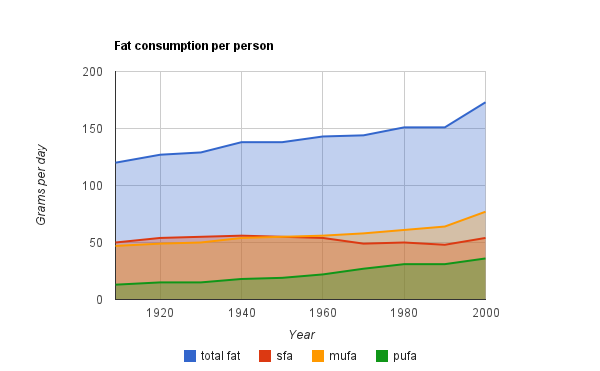 |
The increased supply of corn, canola, and soybean flooded the market with poly-unsaturated oils, which health officials advocated over butter. Hydrogenated for stability, these fats provided a vital component for food manufacturers to meet the demand for “healthy” products. Artificial ingredients like MSG, food dyes, sweeteners, thickeners, and emulsifiers were added to mimic the real foods they usurped. More foods were being irradiated and pasteurized. Packaging and preservatives were introducing toxins like BPA into our system. None if this is automatically “bad” but it illustrates the trend toward increased availability of foods with a long shelf life.
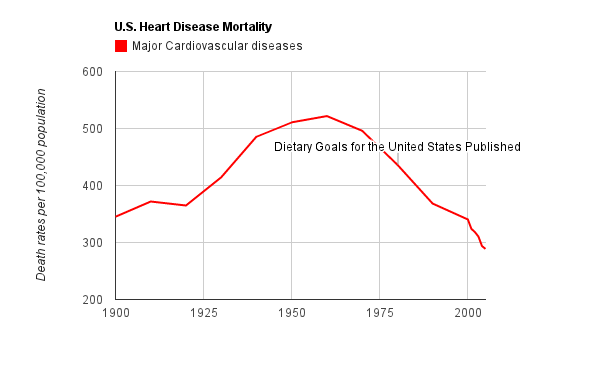 |
Why did Uncle Sam insist that we reduce animal fat in the first place? Beginning in the 1920’s, deaths from heart disease began to surge. The U.S. Senate Select Committee on Nutrition and Human Needs attributed the spike to saturated fat and cholesterol. Today, however, we know there are many risk factors associated with heart disease, including smoking, stress, and trans fats.
How prevalent were these other factors between the 1920’s and 1950’s? Let’s explore in a drinking game called “We used to smoke a helluva lot.” Turn on any episode of Mad Men and do a shot every time someone lights a cigarette. Wait, don’t. You’ll die of alcohol poisoning before Don can seduce another secretary. How about stress? Did anything that may have caused anxiety coincide with the spike in heart disease? Well, yes, I suppose a few Americans may have experienced some minor agitation during The Great Depression and World War II. And then there was trans fat. Had we increased our consumption of that hydrogenated heart hitman?
This is not an excuse to start mainlining butter. My thesis is that diets high in processed food are more likely to contribute to fat gain. Butter, even from grass-fed cows, may be more “natural” than margarine, but it’s still a concentrated block of food energy and a potent ingredient in high calorie, hyper-palatable dishes. It can obviously contribute to increased fat mass if total calorie intake exceeds output.
This holds for meats. Processing can increase palatability and health risks. Notably, inflammation increases on a diet consisting of processed saturated fats from cured meats or packaged baked goods. Furthermore, research suggests that not all saturated fatty acids are created equal. Some, like palmitic acid, are shown to raise LDL levels, whereas stearic acid has been shown to have a neutral or beneficial effect. Alas, corn-fed beef is higher in these “bad” saturated fats, while higher levels of stearic acid can be found in beef from grass-fed cattle.
Omitting animal fats omits something else: animal protein. It’s possible to eat only lean meat, but how often do you do that? It’s likely you sauce it up, because without the fat, lean protein is dry and bland. Good luck finding a food writer composing odes to the mouth feel of nonfat yogurt.
In other words: natural animal fat, a real food, wasn’t killing us, and replacing it with processed grains and oils may have contributed to our weight gain.
PART 2: FAKE FOOD, FURTHER DEFINED
A a percentage of total calories, we were eating slightly less fat and protein, but more carbohydrate.
I this where I decry carbs? Nay. This is where I continue to argue for real food. Many people do very well eating high carb diets. It is in the processing that carbs can become problematic, just like fat.
Long term appetite is largely satisfied by protein, micro-nutrients, and adequate calories. Fat loss requires cuts in energy intake. Therefore, when attempting an energy deficit, food that supplies energy but little else should be the first to go.
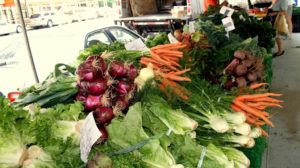 |
| More natural = more nutrients = more satiety = eat less |
I’d be a luddite to declare processed food completely without value. Apollo 11 and Seal Team 6 didn’t accomplish their missions with organic turkeys and salad greens in the trunk. Meal replacement studies have shown some weight loss benefits, as long as protein content is high. Whey protein is pretty far along the processing spectrum, and I’d be hard pressed to find a reason to exclude it. And while it’s easy for me to turn my nose up at a loaf of wheat bread, Sudanese orphans don’t have that option. But many westerners have the luxury of choice, and processed food should be limited when fat loss is the goal.
Top tier: Animals, eggs, vegetables, and fruit, produced as naturally as possible. If you must ingest factory meat, choose lean cuts.
Second tier: Nuts, seeds, legumes, dairy, and properly prepared ancient grains are absolutely better choices than industrial food, but only if you can eat them without complication or over consumption. Experiment with exclusion diets, temporarily removing foods to observe reactions. If chronic symptoms like IBS, arthritis, or headaches go away, then congratulations: socially you will now be as obnoxious as I am.
PART 3: REAL FOOD FATTENS
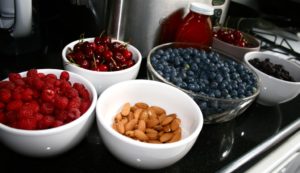 |
| Food shopping takes minutes. Foraging would take days. |
The good news is: there is no double whammy when you overeat real food. It is just extra calories. Overeating locally grown organic blueberries may add fat, in the context of a total caloric surplus. But overeating the same caloric quantity of candy may add fat in the short and long term if they lead to hypoglycemia or displace healthier foods. Four-hundred calories of blueberries are just 400 calories of blueberries, whereas 400 calories of candy are 400 calories of candy plus all of the fattening downstream effects.
But now is probably a good time to remind you of the 80/20 rule. Don’t completely eliminate “bad” foods. It may lead to an eventual binge and complete abandonment of diet. Instead, schedule occasional feasts, or diet breaks. A few unplanned cookies are not the end of the world. But finishing the package because you’d already “broken your diet” creates a real calorie whallop.
PART 4: WHY IT WORKS
All diets are designed to create an energy deficit, whether explicitly or surreptitiously. What successful fat loss diets have in common is sustainability. If this “real food” diet works it is because it surreptitiously creates an energy deficit and is sustainable.
 |
| The Old 96’er was filling. |
Fiber serves the same function. Some types also feed our beneficial gut bacteria. Others help keep us regular. Cooked or uncooked are fine, but raw veggies retain more volume and this lead to increased satiation. In fact, a strong appetite suppressor is a stretched stomach. Eating a mountain of raw vegetables with some lean protein and moderate fat sends the signal to the brain that you are satisfied, now and for hours afterward.
So eat that fish and veggie bowl for lunch, which prompts your body to release appetite suppressors like cholecystokinin and peptide YY, which brings us to:
Hormones
Studies have shown just how rewarding food can be, especially “hyper-palatable” industrial food designed with the perfect fat-sugar-salt ratio. Snacking on these highly addictive treats puts taste buds and dopamine in the driver’s seat. Your brain doesn’t know this stuff is unhealthy, it just knows you’ve found easy energy, so it releases spurts of feel-good reward chemicals that urge you to keep eating.
So how do we combat this juggernaut? With the very same weapons: habits and a conditioned response. Instead of gorging on donuts for the temporary dopamine and serotonin boost, seek the long-lasting and healthy rewards associated with fat loss and sustained energy levels. Feeling good all day beats feeling good for five minutes. Forge new healthy habits to replace the bad ones. Learn to cook. Get interested in your ingredients. If you crave sugary beverages, switch to tea, kombucha, or maybe lightly flavored water (preferably no artificial sweetener). Try coffee with cream for a week and see if you no longer crave sweetener. Find restaurants that practice farm-to-table sourcing. Exercise not for the calorie burn but for the endorphin boost, muscle building, and healthy eating it necessitates. Support muscle gain with quality protein and carbohydrate. Tricks can help limit overeating, like using smaller or darker plates, or brushing your teeth shortly after dinner. Hot spices may slow eating. Pre-emptive eating often helps. Try having a protein shake early in the day to ward off hunger. Some find rules to be helpful, like “no coffee after 10am,” but that may border on The Hard Way and lead to guilt. Instead of an outright ban, remove stimuli and make healthy substitutes. Take proactive steps to control your environment.
- Keep your home free of junk food.
- Try not to shop hungry.
- Watch no commercials (children are especially vulnerable to food advertising).
- Avoid known triggers like the donut guy.
- Talk to friends and family about your diet and health goals and develop a support system.
- Root out enablers. A friend who suggests ice cream after you were clear about your goals is not being helpful.
- If housemates stock cookies, ask that they hide them.
- If drinking makes you overeat, cut back for a while, or have large, filling meals beforehand.
- Stay away from shops you can’t resist, like Starbucks and Dunkin’ Donuts. Take alternate routes.
- Plan ahead whenever possible to avoid eating on impulse.
- Feast occasionally. Eat above your normal calories now and then.
- “Cheat” a little. Avoiding Doritos and donuts all the time may make you binge if you ever do succumb. Instead, allow yourself a little, every now and then. But beware: this demands strong willpower. Buy small packages, or single servings. Don’t stock the pantry.
WARNING: You may not be accustomed to tapping body fat for fuel. If skipping snacks leaves you foggy, irritable, and lethargic, you may be insulin resistant and/or addicted to regular (probably high carb) eating. Kicking the habit will be very difficult. Some find it easier to rip off the band-aid by cutting snacks immediately. They may suffer for days or weeks, but eventually should adapt to utilizing body fat. Others may find success by gradually increasing the time between meals until snacking is no longer necessary. Healthy fat and low glycemic plant foods may help, including beans, if you tolerate them. Tiny, refined carb breakfasts are less likely to sustain you until lunch. If you’re not ready to eliminate snacks, keep the makings for healthy ones on hand, like fruit, canned fish, “ants on a log,” jerky, homemade nut bars, hard boiled eggs, cheese, whey powder, rice cakes, kale chips, or nut butters. If you suffer from a metabolic disorder, it is essential that you improve insulin sensitivity. Lift weights intensely, build muscle, and sprint to get your muscles dumping and refilling glycogen.
“Ah-ha! There it is. This hippy is just trying to indoctrinate me into his greenie animal rights cult!”
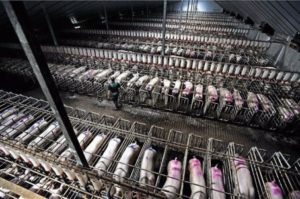 |
| These pigs will live here their entire lives and make you fat. |
| Example day
BREAKFAST: Veggie omelette, whole (preferably raw) milk or cream if you have coffee.
LUNCH: Chipotle salad. Steak, greens, fajitas, rice, guacamole. Increase rice if you lifted weights.
DINNER: Wild salmon with roasted seasonal vegetables, dark chocolate and berries for dessert.
|
It used to be simple. Wild plants and animals were all we had. Then we started planting. In the book “Guns, Germs, and Steel,” Prof. Jared Diamond explains how the agricultural revolution sparked civilization. Domesticating animals and grains meant we could specialize, survive winters, and wage wars. We also started dying earlier. We can’t go back to the forest, but that doesn’t make us slaves to modern food. The sustainable farm offers a bounty difficult to fatten on. It helps us do our best to eat the way nature intended. If for no other reason than to look better naked.
Isn’t nature incredible? It’s like an enormous restaurant.Woody Allen
- Many dieters do just fine with grains. Sandwiches can help control portions. They’re not my ideal, but they’re certainly a superior choice to factory food. I would absolutely choose oat bread from a local organic farm over industrial ground beef with ethylene gas ripened tomato and iceberg lettuce. For strict locavores, when seasonal produce is limited, grains may be necessary for survival. In my opinion, ancient grains are better choices. These include ancient grains include amaranth, spelt, einkorn wheat, and quinoa.
- “Sean are you saying calories don’t matter? Are you saying I can eat as much steak as I want??” No.
- “Sean, all of the things you consider bad worked for _____ (me, neighbor, weight loss guru, dog, Alec Baldwin). Of course they worked, they cut calories. My point is: how easy/enjoyable/healthy/sustainable was it?
-
“Sean, isn’t this basically low carb paleo?!”You would probably classify this as “primal,” not “paleo,” neither of which are low carb de jure. I don’t like waging war on macronutrients. After all, the low-fat 80’s got us into this mess. You still eat carbs with this diet, but you get them from vegetables and fruit, and maybe some rice and oatmeal, instead of pasta, bagels, and pizza. Add starch based on activity. Weight training especially demands it. And remember, I’m advocating 80/20. If you wanna make that 20 all carbohydrate, then try it. If the scale goes up, you know it’s not a great idea.
-
“Sean, do you think I’m made of money? This diet will cost a fortune!”Hondas are cheaper than BMWs. Food from rich soil is more nutritious. Grass fed cows have less fat. So sure you may spend more, but you get more for your money. Grains and legumes are inexpensive for a reason: they’re cheaper to grow. But they’re dense sources of energy with low nutritional value. You can get energy from healthy fat and your stored fat. (You’re trying to burn fat, remember?) Bone-in roasts and whole chickens are undervalued because fatty cuts are still less popular, a vestige of the low-fat days. Slow-cook cheaper meats. Stop throwing away egg yolks (for shame!). If you’re still low in total calories, struggling to feed a family of five, buy more root vegetables, white rice, and oatmeal. Packaged foods like Wheaties and Mac & Cheese are cheap due to discounted raw ingredients (subsidized grain), and artificial additives, so automatically they have a head start on your local farmer. It should actually cost even less, but you pay for convenience, shipping, and advertising. Shop in-season. Join CSA’s. Buy shares of cows. Order meat online if local farmers are too expensive. Prices are slowly normalizing as demand increases. A pound of grass fed ground beef tends to cost a dollar or two more than grain fattened. Check out eatwild.com. Read Joel Salatin’s book: Folks, This Ain’t Normal.
-
“Sean, I’m trying your diet and I’m exhausted and craving carbs!”
You may be a a glucose addict and need to adjust to fat oxidation. For those with metabolic disorders it’s arduous. Be patient. Ween off the other stuff with compromises. This isn’t a low carb diet. It’s a low processed food diet.I too suffer from paleo self-righteousness. It will pass when I become self-righteous about something else. - “I’m constipated!”
Eat your vegetables. They have plenty of fiber. However, big poops are not necessarily good poops. - “I’m annoying people with my snobbery!”
I too suffer from paleo self-righteousness. It will pass when I become self-righteous about something else. -
“Sean, I do everything you’re saying and I’m still not losing fat!”De-stress. Sleep 8 hours. Keep a strict food journal. Some people suffer from highly disrupted appetites. You may need to temporarily dabble in calorie counting to develop an understanding of food density. Daily caloric needs vary widely. Inactive people require far less food. Don’t overestimate your needs or expenditures. An hour on the elliptical does not burn as many calories as you think. If after a month of strict compliance you’re still not losing fat, you may want to talk to your doctor. They aren’t fat loss experts, but you can discuss possible problems like medication side effects. Push for tests to determine allergies, nutritional deficiencies, and thyroid function.And what are your goals? If you want single digit body fat, or you’re shooting a nude scene next month, The Easy Way aint nearly enough. You’ll need more powerful weapons such as very high protein diets, leaner meats, omitting higher carb veggies, cutting booze, intermittent fasting, cutting dairy, supplementing with fish oil, steady-state aerobics, and other tricks. Our bodies seem to prefer carrying slightly more fat than what we’ve idealized. Getting to a healthy weight can be easy, getting below that is a real challenge. Let The Easy Way do the bulk of the work. Fine tuning requires more drastic measures. The sculptor’s razor, not his chainsaw.
-
“Can I still indulge at ballgames, movies, and other special occasions!”If you do, don’t stress over it. But are they “special” or every other night? And do you really enjoy the indulgence or is it just habit? At Yankee stadium, hotdog cues are ubiquitous: peers, ads, smells, and your own conditioned response. The dogs are delicious, but if you feel crappy afterward, what’s so special about them? If you do eat ’em, plan accordingly. Make them your dinner instead of piling them on top of previous meals, and include “healthy” options if available, like salads. If, on the other hand, you’re afraid of the cues and need help avoiding them, eat a satisfying meal before the game. If you must have a snack, choose peanuts, and drink extra water between beers.Holiday meals are good occasions to feast. But if you still want to limit calories, this diet shouldn’t cramp your style at all. Meats and vegetables tend to be plentiful. Just skip the finger foods and bread. And don’t be like me and whine about the animal sources. People are moving at their own pace and it’s not our job to proselytize at every meal. If someone asks, that’s different, but try not to be judgmental, casting the first stone and all that. Most of us were McDonalds regulars at one time.As far as movies go, if you eat the popcorn, have it plain. Nothing with a wrapper because it’s loud.
If you’re presented with this dilemma nearly every day, a flexible diet called If it Fits Your Macros is probably a good choice. -
“I want a cheat day!”Do you mean extra total calories? Good, you should have one weekly or so. Don’t even call it a cheat day. Remove the negative connotation. It’s a feast day. Cheating implies wrongdoing. It’s one day, or meal, of extra food. Relax. In fact, if you eat right all week, one feast day may have beneficial effects, psychological and physical, like improved insulin sensitivity and metabolic rate maintenance.Or by “cheating” do you mean junk food like donuts and candy? That depends on you. Can you have one day or meal of sugary, fatty snacks, and not fall back into regularly snacking this way? Would you completely binge if you tried total abstinence? If you can use moderation, have the junk food. But are you the type who easily develops bad habits? Is it more incipient cheating, building from a donut per week to donuts every other day, to one every morning? If you have no idea which type you are, seek professional guidance.
-
“Sean, my doctor says you’re nuts! I have high cholesterol! And the TV says high protein diets cause inflammation and cancer!”One problem with the media is they often fail to distinguish between studies. Headlines like “high protein diets cause cancer” often neglect to mention where the information came from. Randomized double blind trials, rodent studies, and epidemiological data based on food questionnaires all contribute to the total body of scientific evidence. Neither give the last word, but some are more valuable than the others. Some food surveys have shown correlation between high fat diets and heart disease, but controlled clinical trials tend to show Atkins style diets have healthy effects on blood markers. But again, I’m not advocating a very low carb diet (The Hard Way). For sedentary obese individuals, it may jump start fat loss and get them to their goals, but maintenance diets should probably be higher in carbohydrate to combat inflammation. Regarding cholesterol: some individuals hyper-respond to dietary sources (although their number is smaller than big pharma would have you believe). Most of us reduce cholesterol production in the liver based on intake, but some may have a genetic defect that can lead to hypercholesterolemia. Individuals in this group and anyone with a history of heart disease should absolutely confer with their physicians about diet and medication. Just be sure to ask pointed questions.
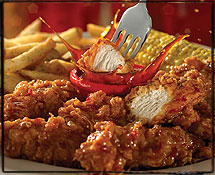
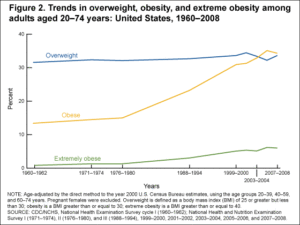


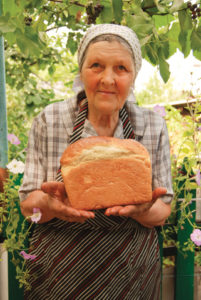
I would like to include reishi mushroom extract in the real food at top tier. Because you know it is very much healthier than others.